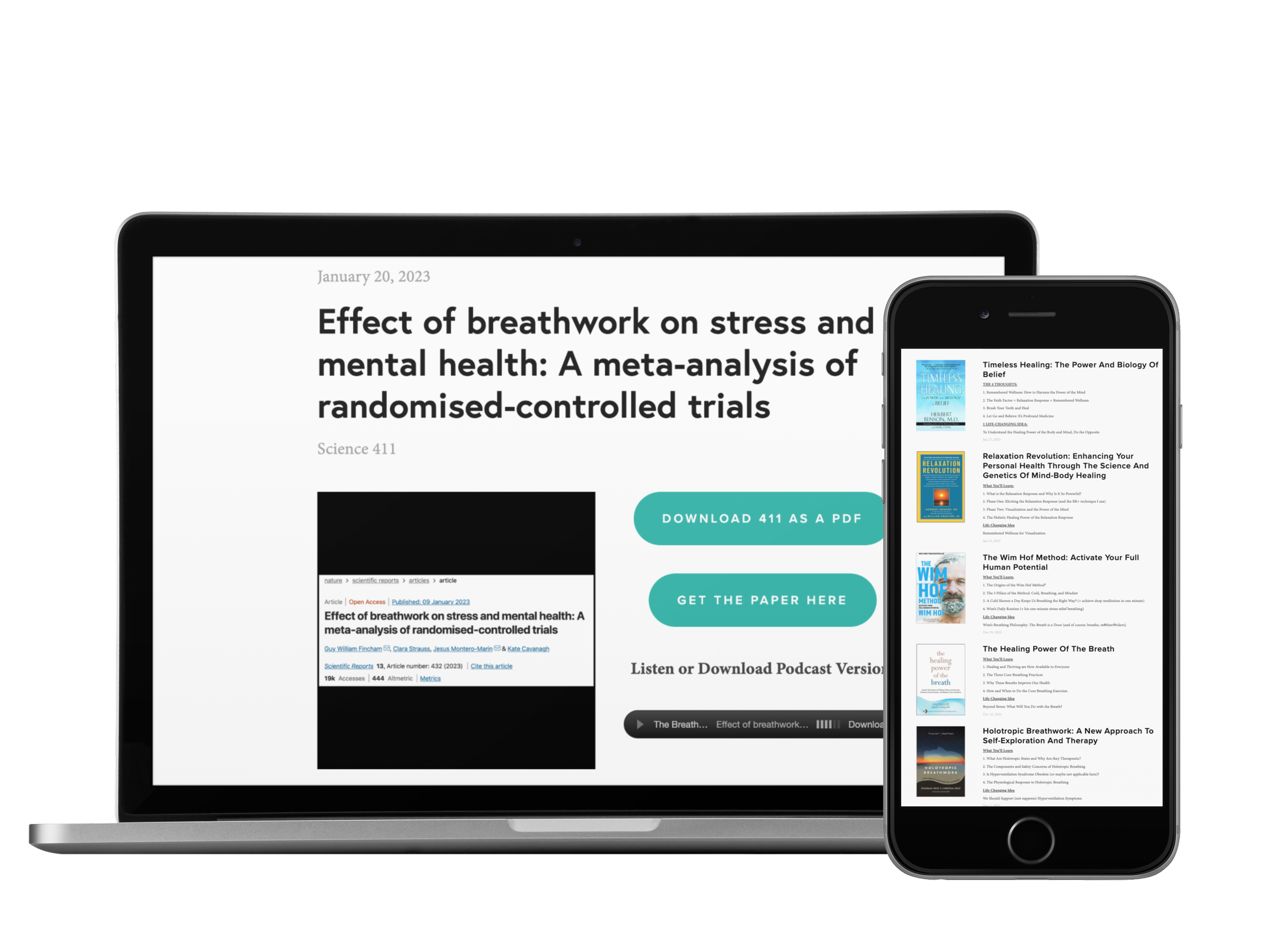If you enjoy listening, you can listen to dozens of past episodes on Spotify, Apple Podcasts, and Audible 😊
Reminder for Instructors:
Don’t forget to sign up for the free 5-day email series: Help More People by Avoiding These 5 Mistakes Holding Back Your Breathing and Mindfulness Coaching
Reading Time: 1 min 34 sec
I hope the next 19’ish breaths are the most nourishing of your day.
4 THOUGHTS
1. Intelligent Control of Breathing
“An intelligent control of our breathing power will lengthen our days upon earth by giving us increased vitality and powers of resistance, and, on the other hand, unintelligent and careless breathing will tend to shorten our days, by decreasing our vitality and laying us open to disease.”
– Yogi Ramacharaka, Science of Breath
Just a simple (but always welcomed) reminder of the power of our breath. By using it intelligently—which often means nasal, slower, deeper, and quieter—it can help us lengthen our days and support our vitality and resilience 👏
2. The Power of Humming
“Bhramari pranayama practice is found to be associated with higher levels of attention, quality of sleep, parasympathetic activity and pulmonary functioning and lower levels of stress, anxiety, depression, sympathetic activity and blood pressure across the included studies.”
- Exploring the Health Benefits of Bhramari Pranayama (2024)
This paper provides a well-rounded look at the evidence supporting bhramari as a formal breath practice. As you can see from the quote, the findings showed a wide range of impressive health benefits.
Read the full paper for more, or get my review and practical takeaways when you become a member of the Breath Learning Center.
3. Three Short Thoughts on Mindful Breathing
1. Breathing saves your life 20,000 times a day; mindfulness helps you appreciate this truth.
2. Breathing, with awareness, is gratitude.
3. The shortest definition of mindfulness is breath.
4. I Dare Not Stop…
“Someone once said, ‘I dare not stop to think, because if I did, I wouldn’t know how to get started again.’”
– Anthony de Mello, Awareness
Just a funny quote on how hard it can be to pause sometimes. But let us take it as a reminder that occasionally “stopping to think” may actually help us start back even better.
1 Quote
“The important thing is not to worry about what is going to happen to us but to create inner strength to deal with whatever does happen.””
1 Answer
Category: Lung Connections
Answer: The existence of this two-way communication system between the gut and lungs suggests that breathing-related factors may influence the gut microbiota.
…
(Cue the Jeopardy! music.)
…
Question: What is the gut-lung axis?
In good breath,
Nick Heath, T1D, PhD
“Breathing is the compound interest of health & wellness.”
Enjoy these posts? Donate to say thanks!
Smarter Coaching. Stronger Practice. Lasting Impact.
Being a great coach or practitioner isn’t just about knowing more, it’s about being a Mixed Mindful Artist: applying the right knowledge in the right way.
The Breath Learning Center gives you concise, practical, and powerful tools to do this, deepening your understanding, strengthening your coaching, and transforming your practice—without fluff or overwhelm.
The Breathing App for Diabetes
This is the first program specifically made for people with diabetes to help manage their stress through breathing and mindfulness practices. In addition to the amazing program inside the app, we have some really neat things coming up, so sign up now!
Amazon Associate Disclosure
I’ve been recommending books for almost 6 years. Yet somehow, I just discovered that I could be an Amazon affiliate [face-palm]. In any case better late than never. Now, any Amazon link you click is an affiliate link. As an Amazon Associate, I earn from qualifying purchases. So, if you’d like to support my work, buying books through these links is helpful : )
* An asterisk by a quote indicates that I listened to this book on Audible. Therefore, the quotation might not be correct, but is my best attempt at reproducing the punctuation based on the narrator’s pace, tone, and pauses.








